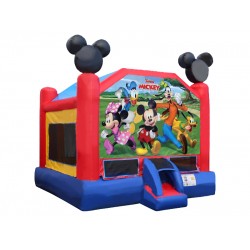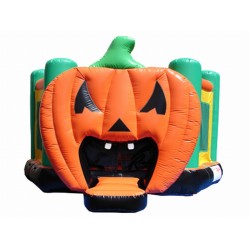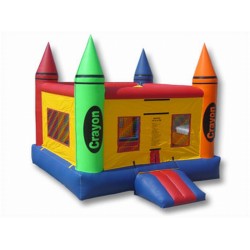How Often Should You Conduct Quality Checks on Jumping Castles?

Jumping castles are a popular attraction at events, offering hours of fun for children and adults alike. However, to ensure they remain safe and durable, regular quality checks are essential. In this article, we'll explore how frequently you should conduct quality inspections on jumping castles and what key areas to focus on during each check.
Why Are Regular Quality Checks Important?
Regular quality checks help to maintain the safety and performance of jumping castles. These checks can prevent accidents, ensure the longevity of the inflatable, and identify potential issues before they become serious problems. Ignoring regular inspections could lead to material wear, structural damage, or even serious safety hazards.
Recommended Frequency for Quality Checks
The frequency of quality checks depends on the usage, location, and weather conditions. Here are some general guidelines for conducting inspections:
- Before Each Use: Perform a basic inspection before inflating the jumping castle at every event. Look for visible damage, proper anchoring points, and cleanliness.
- Monthly Inspections: For jumping castles in frequent use, conduct a thorough inspection every month. This should include checking for material wear, seam integrity, and overall safety features.
- After Heavy Use: If the jumping castle has been used at large events or for extended periods, it’s important to conduct a detailed quality check after the event to ensure no damage occurred.
- Seasonal Inspections: For inflatables stored during off-seasons, inspect them before bringing them out of storage and after long-term storage to check for any issues like mold, mildew, or material degradation.
- Annual Professional Inspection: It is advisable to have a professional conduct a detailed inspection at least once a year to ensure the inflatable meets safety standards and to address any repairs that may be necessary.
What to Include in a Quality Check?
During your quality checks, be sure to inspect the following areas:
- Material Integrity: Look for any signs of tears, holes, or weakened spots in the fabric of the jumping castle.
- Seams and Stitching: Inspect the seams and stitching for fraying or splitting, as this can compromise the structural integrity of the inflatable.
- Anchoring Points: Ensure that all anchoring points are strong and secure to prevent the inflatable from shifting during use.
- Blower System: Check the blower motor, hoses, and connectors for any issues that could affect inflation or air pressure consistency.
- Surface Cleanliness: Keep the surface free of debris, mold, or other contaminants that could affect user safety or the material’s durability.
- Zippers and Valves: Ensure that all zippers and air valves are functioning properly and securely closing the inflatable.
Signs That Immediate Quality Checks Are Needed
There are situations when immediate quality checks are necessary, including:
- Visible damage after a major event or incident, such as excessive jumping, sharp objects, or weather-related wear.
- Unusual sounds, such as air leaks or popping noises, when the jumping castle is inflated.
- Changes in the inflatable’s shape, sagging, or loss of air pressure during use.
- Reports of accidents or minor injuries during use that may be related to the structure or surface condition.
Conclusion
Conducting regular quality checks on jumping castles is crucial to ensure the safety of users and the longevity of the inflatable. By performing inspections before each use, scheduling monthly and seasonal checks, and addressing any signs of wear or damage immediately, you can maintain a safe and enjoyable experience for everyone. Don’t forget to consult a professional for annual inspections to keep your jumping castle in top condition.



